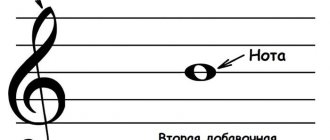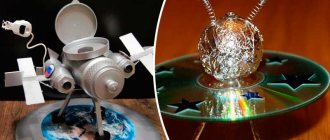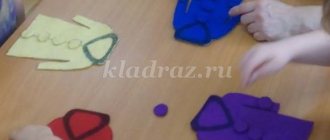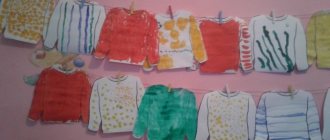Cognitive tasks for children 4-5 years old
1. "Domestic and wild animals" . Prepare cards with various animals: wolf, hare, mouse, fox, cow, elk, mole, cat, raccoon, deer, dog and others. Invite the child to divide the animals into two groups: domestic and wild. It’s good to play such games after a trip to the zoo. Such tasks develop horizons and understanding of the world around us, as well as speech (if you ask questions correctly and talk about animals, for this you can use the speech therapy cards below).
Topic: Pets
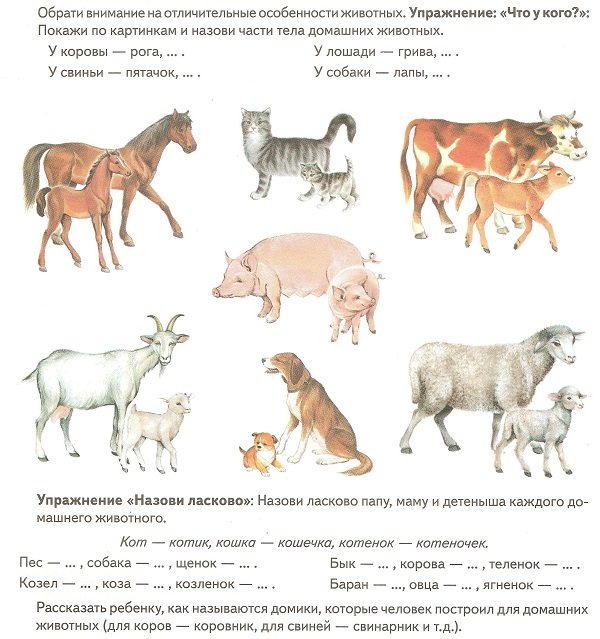
2. "Professions" . Print pictures depicting people of various professions: cook, ship captain, driver, salesman, teacher, gardener, doctor, judge, fireman and others. In order for the baby to look for generalizing properties and name them, it is necessary to prepare separate objects (or pictures): a ladle, a pointer, a steering wheel, a mantle, a hose and others. The child chooses a picture with a person’s profession and looks for a suitable item for him.

3. "Spring" . At 4 years old, the baby already knows the basic colors and shapes, so to continue the development of this topic, you can organize a game with “Fruto-nanny” baby food lids. The caps fit together perfectly and come in a variety of colors. Connecting them together is quite simple to create interesting objects. On a landscape sheet you can draw a circle, square, flower, cloud. From the lids, collect shapes of the same shape so that you can attach them to a sheet of paper.

Types of tasks in mathematics
Entertaining mathematical tasks include games, riddles, comic problems, puzzles, and exercises with geometric shapes. All of them are aimed at developing reaction speed, logical and innovative thinking, resourcefulness, and imagination.
Since preschool age is divided into junior and senior, tasks should be selected taking into account the degree of difficulty. The younger preschool age covers the age period of 3-4 years, and the older one - 5-7 years. Of course, the breakdown of tasks by age is conditional, since everything depends on the pace of development of the offspring, which is what we need to focus on.
Games to develop attention in children 4-5 years old
At the age of 4-5, logical thinking is actively formed; it is required to be able to focus on a specific task. In the future, this helps to develop perseverance.
1. Draw various objects on a landscape sheet: a flower, a balloon, a car, the sun. Ask your child to trace only the balloons with a pencil.
2. Cross out the letter “N”. On a landscape sheet, print out the letters of the alphabet randomly and ask the baby to cross out the letter “H” with a red pencil, all the letters “A” with a green pencil, and so on.

3. "Leaf fall." On a sheet of paper you need to find identical leaves. Ask your child to connect identical leaves with a pencil and color them. The game teaches you to determine the similarity of objects and develops spatial thinking.
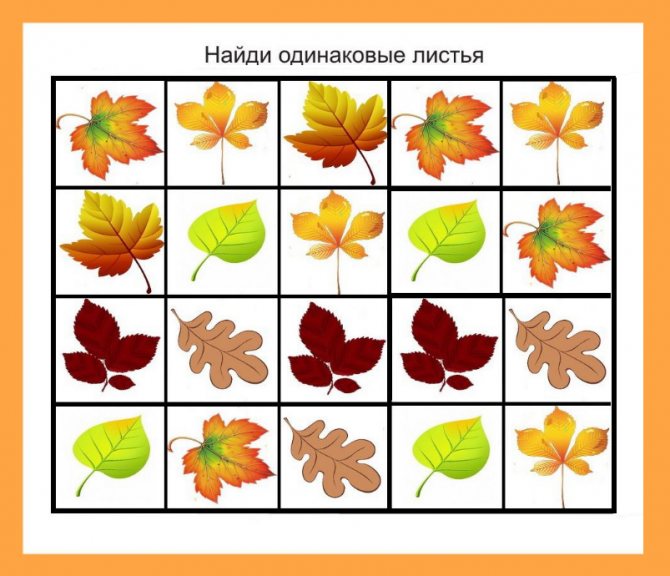
Games, mathematical entertainment
Games and mathematical entertainment are a great way to diversify work patterns. If you choose a game with two participants, the child’s interest will increase due to the spirit of competition.
Games for younger preschoolers
“Finish the drawing.”
The child is given a sheet of paper with geometric shapes depicted on it. The task is to draw a small picture based on the desired geometric figure. For example, from a circle you can draw a snowman or a clock, from a square - a TV or a briefcase.
An example of a game for older preschoolers
"Houses".
For this game you will need 20 images of houses with 10 windows. You can judge the apartments by the presence of curtains on the windows. The essence of the game is to compare the houses with each other: how many residents need to be moved in so that all the apartments are fully occupied, how many residents need to be removed from the house so that the same number of apartments are occupied in it as in the fifth house.
Universal games
The older the child, the more numbers there can be.
Math cycle tasks
1. Buy magnets of different colors at any stationery store. With their help, it is convenient for the baby to understand numbers and concepts - more and less. Assignment: how many kittens does the cat have, and how many puppies does the dog have? Who has more children?
2. On a piece of paper, draw 5 stars in the sky. Invite your child to count and draw the same number of stars. How much should it be?

3. Draw snails and flowers in the picture. Give the task to circle the flowers with a green pencil, count the snails and draw a line to the flower (which snail likes which flower, do you think?). How many extra flowers are left?
4. Print a fly agaric on a landscape sheet. Give your child the task of counting the spots on the hat. Draw as many dots nearby as there are spots on the fly agaric. How many circles did you get?
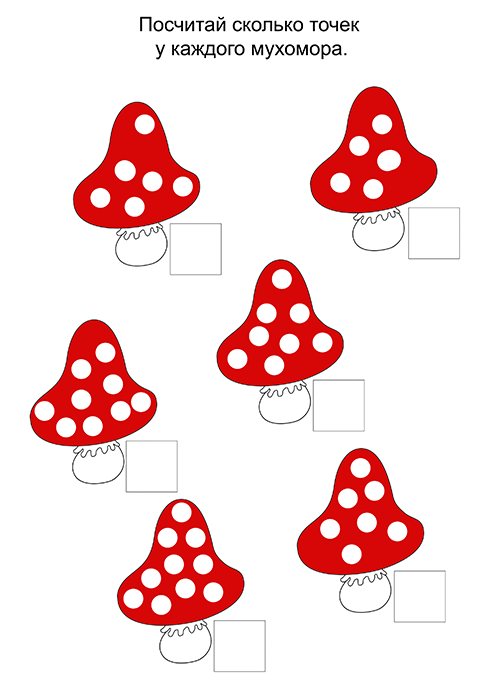
5. Connect points from 1 to 15 in order. You should get a picture. Children really like such tasks and develop fine motor skills and teach counting rules.
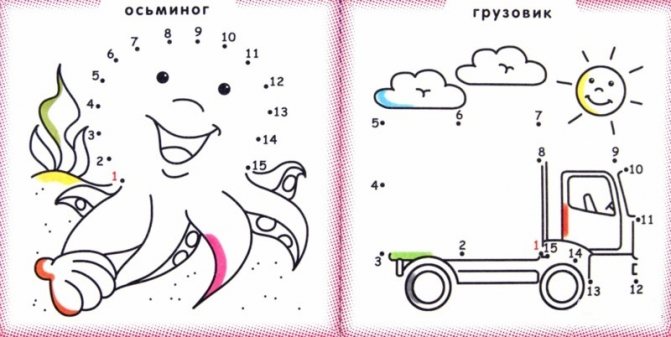
6. Connect a group of three flowers with lines. Flowers are drawn on the leaf in a chaotic order. You need to be careful and distribute all the flowers into groups.
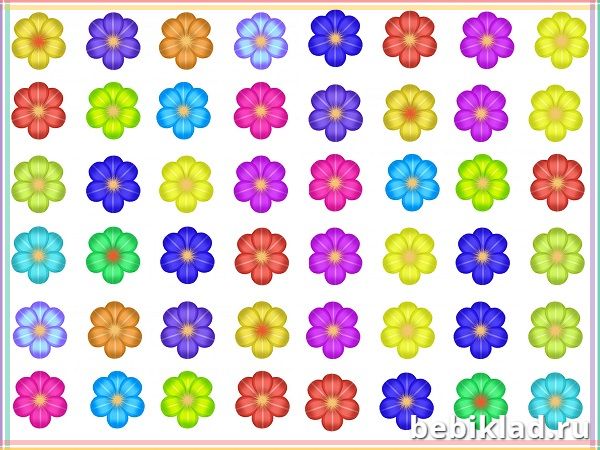
Riddles, comic problems, entertaining questions
Children meet riddles, comic problems and entertaining questions with extraordinary enthusiasm. They are able to activate the child’s mental activity, develop skills to notice the main and essential properties, separating them from the secondary ones.
Tasks belonging to this category are excellent for use at the beginning of a lesson to prepare the child for intellectual work and conduct mental gymnastics.
Comic tasks can create a favorable emotional background and lift your spirits. As a way to relax and switch attention, tasks can be used in the middle of the lesson.
Mathematical riddles are intricate questions or descriptions of some object or phenomenon that a child must guess. Since the riddles are mathematical, numbers will definitely appear in them, and computational actions will need to be performed.
Comic problems are game tasks with a mathematical meaning, to solve which you need to use ingenuity and resourcefulness, and in some cases have a sense of humor. It is recommended to study according to them from the senior preschool age. The content of the tasks is unusual, since along with the main characteristics they include secondary ones. It turns out that the search for an answer is, as it were, disguised by other conditions.
Examples of humorous problems
- 2 cars drove 5 km. How many kilometers did each car travel?
- If a stork stands on one leg, then it weighs 4 kg. How much will a stork weigh when it stands on 2 legs?
- What is heavier: 1 kg of concrete or 1 kg of wool?
Interesting questions
They are short questions asking people to count something.
- How many ears do three mice have?
- You, me, you and me. How many of us are there?
Educational tasks with words
1. On the sheet in the center are written words in block letters: sea, flower, sun, snail. Match the word and the picture, draw a line.
2. Different words are written on the sheet: mom, cat, dog, dad, summer, spring, tree, flower. You need to cross out the letter A in the words. The baby learns perseverance and attentiveness.
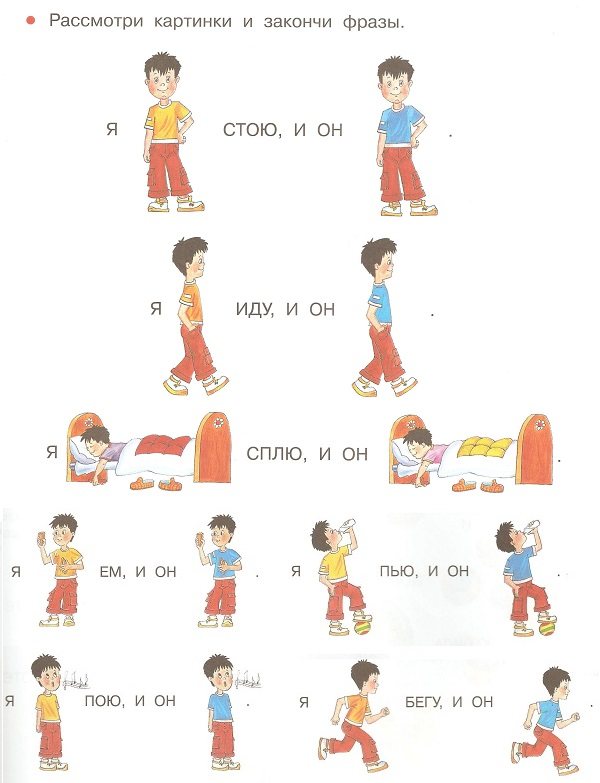
3. Circles and triangles are drawn on a landscape sheet. The child is given the task to draw the letter M in each circle, and the letter C in each triangle.
4. “On the contrary.” An adult names any word, and the child must find the opposite meaning. For example: an adult says “hot”, a child answers “cold”, etc.
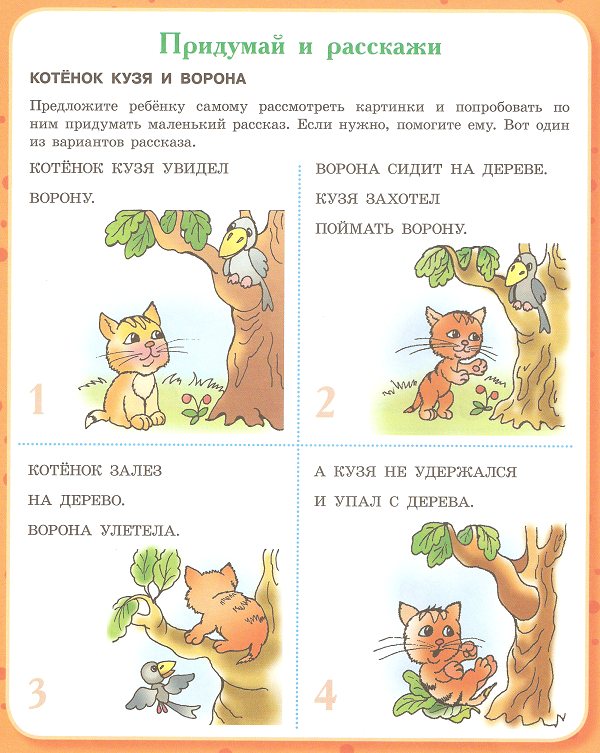
5. “A kind word.” Name the object, and the baby chooses an affectionate word to designate it. For example: ball - ball, house - house, leg - leg.
6. "Fruits and vegetables." Place various pictures of fruits and vegetables in front of the child. There are many options for games: ask the young student to put fruits in a basket. Ask to choose the vegetables from which mom makes a salad for lunch.
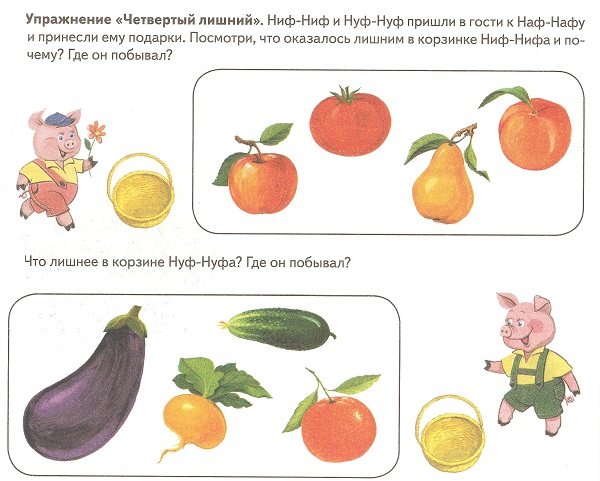
7. “Find the odd one out.” Tell your child a set of words in which the words belong to the same group, but one word is superfluous. The child must identify the odd one by ear. For example: tree, grass, flower, snail. The extra word is snail. The child must give an explanation of why this particular word is superfluous.
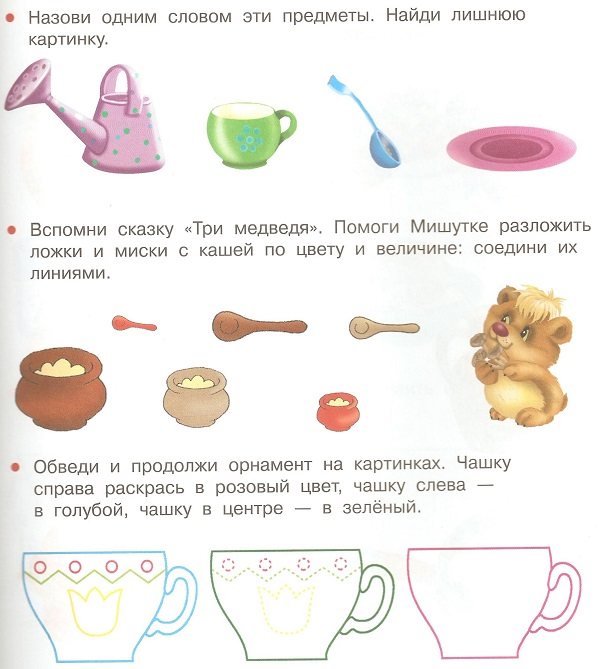
Card index of games by region. (middle group)
Zubkova Lyudmila Alexandrovna
Card index of games by region. (middle group)
Card index game for social and communicative development
middle group
"Name yourself"
Goal: To develop the ability to present oneself to a group of peers.
The child is asked to introduce himself, saying his name as he likes best, as he would like to be called in the group .
"Call me kindly"
Goal: to cultivate a friendly attitude among children towards each other.
The child is asked to throw a ball or pass a toy to a favorite peer (optional)
affectionately calling him by name.
"Magic Chair"
Goal: to cultivate the ability to be affectionate, to activate gentle, affectionate words in children’s speech.
One child sits in
, and the rest say kind, affectionate words about him.
"Magic wand"
Goal: continue to develop the ability to be affectionate.
Children stand in a circle. One child passes the stick to the person standing next to him and calls him affectionately.
"Freeze"
Goal: develop listening skills, develop organization.
The meaning of the game is in the teacher’s simple command “Freeze”
, which can be heard during children’s activities, in a variety of situations.
"Stream"
Goal: to develop the ability to act together and teach to trust and help those with whom you communicate.
Before the game, the teacher talks with the children about friendship and mutual assistance, about how they can overcome any obstacles. Children stand one after another and hold on to the shoulders of the person in front. In this position they overcome any obstacles.
"Magic wand"
.
Goal: developing ideas about the capabilities of one’s own and peers.
One names the fairy tale, another its characters, etc.
"Polite Words Store"
Goal: develop goodwill, the ability to establish contact with peers.
Educator: I have polite words on the shelf in my store: greetings (hello, good morning, good afternoon, etc.)
;
affectionate addresses (dear mommy, dear mommy, etc.)
.
I will offer you various situations, and you buy the right words from me.
Situation. Mom brought apples from the store. You really want to, but mom said you need to wait until lunch.
"Body"
Goal: Continue to reinforce polite words.
Children sit around a table on which there is a basket. The teacher turns to the child: “Here’s a box for you, put a polite word in it.”
.
"That's what grandma is like"
Goal: develop respect for elders, reinforce kind words.
Each child takes turns telling what his grandmother’s name is, and how affectionately you can call her.
"Wonderful bag"
Goal: expanding the volume of vocabulary, developing tactile perception and ideas about the characteristics of objects.
Children take turns recognizing the object by touch, naming it, and taking it out of the bag.
"Good words"
.
Goal: to develop the ability to use kind words in speech.
Children choose kind words. Show the children a picture of children working. What can you call children who work? (Hardworking, active, kind, noble, etc.)
"Rug of Reconciliation"
.
Goal: develop communication skills and conflict resolution skills.
Coming from a walk, the teacher tells the children that two boys quarreled over a toy. Invites you to sit down opposite each other on the “rug of reconciliation”
find out the cause of the discord and find a way to peacefully resolve the problem. Discuss how to share the toy.
“What to do, what to do?”
Goal: to awaken children’s initiative, independence, intelligence, responsiveness, and willingness to look for the right solution.
Create a situation: there are no paints of certain colors, there is not enough plasticine for modeling. Children look for solutions on their own.
"Package"
Goal: expanding the vocabulary, developing coherent speech.
The child receives a package from Santa Claus and begins to describe his gift without naming or showing it. The item is presented after the children have guessed it.
“This is what Santa Claus is like”
Goal: develop respect, reinforce kind words.
The child tells what gifts Santa Claus brought, how he thanked him, and how you can affectionately call him.
"Without a mask"
Goal: develop the ability to share your feelings, experiences, and construct unfinished sentences.
The teacher says the beginning of the sentence, the children must finish.
What I really want is...
I especially like it when...
One day I was very frightened by...
"Day Night"
Goal: develop the ability to collaborate and achieve the desired result.
After the words “The day comes - everything comes to life”
The participants in the game move chaotically and jump. When the teacher says:
“Night comes, everything freezes
,” the children freeze in bizarre poses.
“Listen outside the window, outside the door”
Goal: develop auditory attention.
As instructed by the teacher, all children focus their attention on the sounds and rustles of the corridor. Then they take turns listing and explaining what they heard.
"Who better to praise"
Goal: to be able to name the characteristics of animals based on the example of an adult, to develop attention and the ability to describe.
The teacher takes a bear for himself and gives the child a bunny.
And he begins: “I have a bear.”
Child:
“And I have a hare.”
etc.
"Who am I talking about"
Goal: to develop observation skills, the ability to focus on the main features of the described object.
The teacher describes the child sitting in front of him, naming his details of clothing and appearance. For example: “This is a girl, she is wearing a skirt and blouse, her hair is blond, her bow is red. She loves to play with the Tanya doll."
"That's what dad is like"
.
Goal: develop respect for dad, reinforce kind words.
The child tells what his dad’s name is, how he plays with him, how he affectionately calls him.
"Describe a friend"
.
Goal: to develop attentiveness and the ability to describe what you saw.
Children stand with their backs to each other and take turns describing their partner’s hairstyle, clothes, and face. Then the description is compared with the original and a conclusion is drawn about how accurate the child was.
“That’s what mom is like”
.
Goal: develop love for mom, reinforce kind words.
Each child takes turns telling what his mother’s name is, how she takes care of him, and how she can be affectionately called.
Card index of didactic games on cognitive development
middle group
"Find the error"
Goals: to learn to clearly pronounce polysyllabic words loudly, to develop auditory attention.
"Say the word"
Goals: to learn to clearly pronounce polysyllabic words loudly, to develop auditory attention.
“It happens or not”
Goals: to teach to notice inconsistency in judgments, to develop logical thinking.
"What season?"
Objectives: to learn to correlate the description of nature in poetry or prose with a certain time of year; develop auditory attention and quick thinking.
“Where can I do what?”
Goals: activation in speech of verbs used in a certain situation.
“Which one, which one, which one?”
Objectives: to teach how to select definitions that correspond to a given example or phenomenon; activate previously learned words.
"Finish the sentence"
Goals: learn to complement sentences with a word of the opposite meaning, develop attention.
"Find out whose sheet it is"
Goals: to teach to recognize a plant by its leaf (name a plant by its leaf and find it in nature, develop attention.
“Guess what kind of plant”
Goals: learn to describe an object and recognize it by description, develop memory and attention.
“Who am I?”
Goals: learn to name a plant, develop memory, attention.
"Who has who"
Goals: consolidate knowledge about animals, develop attention and memory.
"Who what)
flies?
Goals: consolidate knowledge about animals, insects, birds, develop attention and memory.
“What kind of insect?”
Goals: to clarify and expand ideas about the life of insects in the fall, to learn to describe insects by characteristic features, to cultivate a caring attitude towards all living things, to develop attention.
"Hide and Seek"
Goals: to learn to find a tree by description, to consolidate the ability to use prepositions in speech: for, about, before, next to, because of, between, on; develop auditory attention.
“Who can name more actions?”
Goals: learn to select verbs denoting actions, develop memory and attention.
“What happens?”
Objectives: learn to classify objects by color, shape, quality, material, compare, contrast, select as many items as possible that fit this definition; develop attention.
“What kind of bird is this?”
Objectives: to clarify and expand ideas about the life of birds in autumn, to learn to describe birds by their characteristic features; develop memory; cultivate a caring attitude towards birds.
"Render a guess, we'll guess it"
Objectives: consolidate knowledge about garden plants; the ability to name their signs, describe and find them by description, and develop attention.
“It happens - it doesn’t happen”
(with a ball)
Goals: to develop memory, attention, thinking, speed of reaction.
“The third odd one”
(plants)
Goals: to consolidate children’s knowledge about the diversity of plants, to develop memory and reaction speed.
"Game of Riddles"
Goals: expand the stock of nouns in the active dictionary.
“What then?”
Objectives: to consolidate children’s knowledge about the parts of the day, about the activities of children at different times of the day; develop speech and memory.
“When do you do this?”
Goal: to consolidate cultural and hygienic skills and knowledge of the parts of the day, to develop attention, memory, and speech.
"Highlight the word"
Goals: to teach children to clearly pronounce polysyllabic words loudly, to develop auditory attention.
"Tree, bush, flower"
Goals: consolidate knowledge of plants, expand children’s horizons, develop speech and memory.
"Who by whom (with what)
will?"
Goal: to develop speech activity and thinking.
"Summer or Autumn"
Goal: consolidate knowledge of the signs of autumn, differentiating them from the signs of summer; develop memory, speech; nurturing dexterity.
"Be careful"
Goal: differentiation of winter and summer clothing; develop auditory attention, speech hearing; increasing vocabulary.
Listen carefully to the verses about clothing, so that you can then list all the names that appear in these verses. Call it summer first. And then winter.
"Take - don't take"
Purpose: differentiation of forest and garden berries; increasing vocabulary on the topic “Berries”
; develop auditory attention.
“What do they plant in the garden?”
Goal: to learn to classify objects according to certain characteristics (by their place of growth, by their use)
; develop quick thinking,
auditory attention.
“Who will collect it sooner?”
Purpose: to teach children to group vegetables and fruits ; cultivate quick reaction to the teacher’s words, endurance and discipline.
“Who needs what?”
Purpose: to exercise in the classification of objects, the ability to name things necessary for people of a certain profession; develop attention.
Educator: - Let's remember what people of different professions need to work. I will name his profession, and you will tell him what he needs for work.
"Make no mistake"
Goal: to consolidate children’s knowledge about different sports, to develop resourcefulness, intelligence, and attention; cultivate a desire to play sports.
“Guess it!”
Goal: to learn to describe an object without looking at it, to identify essential features in it, to recognize an object by description; develop memory, speech.
"Finish the sentence"
Goal: learn to complete sentences with a word of the opposite meaning; develop memory, speech.
“Where is what?”
Goal: to learn to identify with a given sound a group of words consolidate the correct pronunciation of certain sounds in words; develop attention.
"Catch up with your shadow"
Purpose: to introduce the concept of light and shadow; develop speech.
"Finish the sentence"
Goal: learn to complete sentences with a word of the opposite meaning; develop memory, speech.
“Who has what color?”
Goal: to teach children to recognize colors, consolidate the ability to identify objects by color, develop speech and attention.
"Which subject"
Goal: to teach to classify objects according to a certain criterion (size, color, shape, to consolidate children’s knowledge about the size of objects; to develop quick thinking
“What can animals do?”
Goal: learn to create a wide variety of verbal combinations; expand the semantic content of the word in the mind; develop memory.
"Come up with another word"
Goal: expand vocabulary; develop attention.
“Choose similar words”
Goal: to teach children to clearly pronounce polysyllabic words loudly; develop memory and attention.
Card index of games for artistic and aesthetic development in the middle group .
"Guess and Tell"
Goal: To consolidate children's knowledge about folk toys as one of the forms of folk arts and crafts; recognize a toy by its image, be able to explain your choice, highlight the elements of painting, its color and the composition of the pattern on the product. Develop aesthetic taste.
"Gorodets patterns"
Goal: To strengthen children’s ability to compose Gorodets patterns, recognize the elements of painting, remember the order of the pattern, choose their own color and shade for it, develop imagination, and the ability to use the acquired knowledge to compose a composition.
“Paint a scarf for mom”
Goal: To consolidate children's knowledge about the art of the Russian shawl. To develop children's aesthetic taste, to teach how to make simple patterns from various decorative elements (flowers, leaves, buds, twigs, etc., the ability to select the color scheme of a pattern.
"Art Crafts"
Goal: To consolidate children's knowledge about folk arts and crafts; find the desired trade among others and justify your choice.
"Collect a Gzhel rose"
Goal: To strengthen children’s ability to compose a Gzhel rose using appliqué based on Gzhel painting, to maintain interest in Gzhel craft.
"Collect a matryoshka doll"
Goal: To consolidate children’s knowledge about the folk toy - matryoshka; the ability to assemble a nesting doll from parts using the mosaic method. Highlight decoration elements. To cultivate respect and love for folk art.
“Complete the pattern”
Purpose: the game is aimed at developing children's attention and memory, developing a sense of symmetry with subsequent painting.
Progress of the game: the beginning of the pattern is drawn on a sheet of paper. Children need to extend the pattern further and color it.
"Find friends among the colors "
Goal: to discover the level of children’s knowledge in choosing paint that matches the color of the object; draw in color
Progress of the game: silhouettes of objects are drawn on sheets of paper. The teacher gives the task to find “friends” among the objects
yellow, green, blue, red colors. Children find objects that match a certain color and color them.
“Make a still life”
Goal: to improve compositional skills, the ability to create a composition on a specific topic (still life, highlight the main thing, establish a connection by arranging the image in space.
Progress of the game: the envelope contains images of various vegetables, fruits, as well as various vases, plates, dishes, and baskets. Children need to choose objects and create their own still life.
"Finish the picture "
Goal: to discover the level of formation of perception and definition of an object behind its parts, to be able to complete it; develop fantasy and imagination.
Progress of the game: objects are partially drawn the pictures (bunny, Christmas tree.)
. You need to recognize the subject, fill in the parts that are missing, and color it.
“Let’s prepare the table for the holiday”
Goal: to develop the ability to select shades of primary colors, to create a beautiful color scheme.
Progress of the game: in front of the children there are different colors (red, yellow, blue, green)
cut out paper tablecloths and 4 - 5 shades of paper tableware of each color. The task is to match the main color to its shades. Select tableware so that the color matches the tablecloth.
Board game "Domino"
Goal: To consolidate children's knowledge about arts and crafts - toys; the ability to find the right toy and justify your choice. To consolidate knowledge about the manufacture of folk toys and the features of each. Cultivate a love of beauty.
“Paint a scarf for mom”
Goal: To consolidate children's knowledge about the art of the Russian shawl. To develop children's aesthetic taste, to teach how to make simple patterns from various decorative elements (flowers, leaves, buds, twigs, etc., the ability to select the color scheme of a pattern.
"Art Crafts"
Goal: To consolidate children's knowledge about folk arts and crafts; find the desired trade among others and justify your choice.
"Collect a Gzhel rose"
Goal: To strengthen children’s ability to compose a Gzhel rose using appliqué based on Gzhel painting, to maintain interest in Gzhel craft.
"Collect a matryoshka doll"
Goal: To consolidate children’s knowledge about the folk toy - matryoshka; the ability to assemble a nesting doll from parts using the mosaic method. Highlight decoration elements. To cultivate respect and love for folk art.
“Complete the pattern”
Purpose: the game is aimed at developing children's attention and memory, developing a sense of symmetry with subsequent painting.
Progress of the game: the beginning of the pattern is drawn on a sheet of paper. Children need to extend the pattern further and color it.
“Find friends among the colors ”
Goal: to discover the level of children’s knowledge in choosing paint that matches the color of the object; draw in color
Progress of the game: silhouettes of objects are drawn on sheets of paper. The teacher gives the task to find “friends” among the objects
yellow, green, blue, red colors. Children find objects that match a certain color and color them.
Card index of didactic games on speech development in the middle group
1. “Who talks like that?”
Goal: expanding vocabulary, developing reaction speed.
2. "Who lives where?"
Goal: to consolidate children’s knowledge about the homes of animals and insects. Consolidating the use of the grammatical form of the prepositional case with the preposition “in”
.
"Give me a word"
Goal: development of thinking, speed of reaction.
4. “Who moves how?”
Goal: enrichment of children’s verbal vocabulary, development of thinking, attention, imagination, dexterity.
5. "Hot Cold"
Goal: to consolidate in the child’s mind and vocabulary the opposite characteristics of objects or antonym words.
6. “What happens in nature?”
Goal: to consolidate the use of verbs in speech, agreement of words in a sentence.
7. “Who can perform these actions?”
Goal: activation of children’s verbal dictionary, development of imagination, memory, dexterity.
8. “What is it made of?”
Goal: to consolidate the use of relative adjectives and methods of their formation in children’s speech.
9. "Put it into pieces"
Goal: orientation in space.
10. “Who was who?”
Goal: development of thinking, expansion of vocabulary, consolidation of case endings.
11. “Which vegetable?”
Goal: development of tactile, visual and olfactory analyzers.
12. “What does it sound like?”
Goal: development of auditory attention and observation.
13. “What happens in the fall?”
Purpose: to teach the seasons, their sequence and main features.
14. “What’s missing?”
Goal: development of attention and observation.
15. “Catch and throw – name the colors”
Goal: selection of nouns for the adjective denoting color. Reinforcing the names of primary colors, developing children's imagination.
"Whose head?"
Goal: expanding children's vocabulary through the use of possessive adjectives.
17. "The Fourth Wheel"
Goal: to consolidate children’s ability to identify common features in words and develop the ability to generalize.
18. "One is many"
Goal: to consolidate various types of endings of nouns in children’s speech.
19. "Pick up the signs"
Goal: activation of the verb dictionary.
20. "Animals and their young"
Goal: to consolidate the names of baby animals in children’s speech, consolidate word formation skills, develop dexterity, attention, and memory.
“What is round?”
Goal: expanding children's vocabulary through adjectives, developing imagination, memory, and dexterity.
22. "Pick up a word"
Goal: development of word formation skills, selection of related words. For example, bee - bee, little bee, beekeeper, beekeeper, bees, etc.
23. "Generalizing concepts"
Goal: expansion of vocabulary through the use of generalizing words, development of attention and memory, ability to correlate generic and specific concepts.
24. "Good bad"
Goal: introducing children to the contradictions of the world around them, developing coherent speech and imagination.
25. "Near and Far"
Goal: development of auditory attention, hearing acuity.
26. "Call me kindly"
Goal: strengthening the ability to form nouns using diminutive suffixes, developing dexterity and speed of reaction.
27. "Fun account"
Goal: to consolidate the agreement of nouns with numerals in children’s speech.
28. “Guess who called?”
Goal: distinguishing the most abbreviated sound complexes by timbre.
Card index of games for physical development in the middle group .
"We are brave guys"
Target. Cultivate endurance and discipline.
Improve the skills of crawling on all fours between objects - in a straight direction, along a board, on an inclined board.
"Puppy"
Target. Cultivate a desire to help.
Practice climbing the gymnastic wall, climbing from one flight to another, be careful, do not drown, act on a signal.
Formation of safe behavior skills on the gymnastic wall.
Form visual perception of objects in the surrounding reality.
Equipment: gymnastic wall, toy dog.
"Little Bunnies"
Target. Develop the ability to obey the rules of the game.
Develop reaction speed, agility, speed, attention.
Develop rhythmic, expressive speech and coordination of movements.
Develop orientation in space.
"Stream"
Target. Cultivate a friendly attitude towards the participants in the game.
Develop the ability to crawl between objects, crawl under obstacles (height - 50 cm, without touching objects.
Develop orientation in space, visual perception of objects in the surrounding reality.
"Shepherd and Shelters"
Target. Cultivate endurance and discipline.
Improve your crawling skills on all fours.
Develop orientation in space.
"Horses"
Target. Cultivate a friendly attitude towards the participants in the game.
Develop running skills at an average pace .
Practice the pronunciation of the sound - “ts”
.
Develop orientation in space.
"Sharp Shooters"
Target. Cultivate endurance and discipline.
Improve your skills in throwing a ball at a vertical target.
Develop the eye, oculomotor functions, and gaze fixation.
"Firework"
Target. Foster independence.
Exercise children in throwing a ball from the bottom up and the ability to catch it with both hands.
Develop oculomotor functions and gaze fixation.
"Crocodiles"
Target. Cultivate a friendly attitude towards the participants in the game.
Develop the ability to climb through a hoop, climb an inclined ladder, and act in accordance with the words of the text.
"Cunning fox"
Target. Cultivate a friendly attitude towards the participants in the game.
Practice climbing a gymnastic wall.
Strengthen the ability to coordinate movements with words.
Formation of caution and discretion on the gymnastic wall.
"Gathering the Harvest"
Target. Cultivate endurance and discipline.
Practice throwing the ball at a horizontal target with your left and right hands.
Develop the eye, oculomotor functions, and gaze fixation.
"Hunters and Ducks"
Target. Develop organization, attention, and the ability to control your movements.
Exercise children in throwing a ball at a moving target.
Develop the eye, oculomotor functions, and gaze fixation.
"Fox in the Chicken Coop"
Goal: To develop attention, dexterity, and execution of movements on a signal. Practice running.
“Who will throw the bag further?”
Goal: To develop in children the ability to act on a signal. Practice throwing into the distance with your right and left hands, running, and color recognition.
"Hares and the Wolf"
Goal: To develop coordination of movement and spatial orientation in children. Practice running and jumping.
"Migration of Birds"
Goal: to develop children's self-control and ability to move on cue. Exercise in running, climbing.
"Burn, burn clearly"
Goal: to develop children's self-control and spatial orientation. Practice running fast.
"Two Frosts"
Goal: to develop in children inhibition, observation, and the ability to perform movements on a signal. Exercise in running
"Frogs and Heron"
Goal: to develop in children the ability to act on a signal, dexterity. Practice standing high jumps
"Wolf in the Moat"
Goal: to develop courage and dexterity, the ability to act on a signal. Practice running long jumps.
"Homeless Hare"
Goal: to develop spatial orientation in children. Exercise fast running
Tasks for the development of creative thinking
1. Create your own magazine or book. To complete this task you will need colored paper, clippings from various glossy magazines, colored cardboard, glue, and tape. Words for the book can also be cut out from magazines. It turns out to be a joint work.
2. Theater. Offer to perform a real puppet show. Make costumes, select props, prepare invitations for household members. You can choose any Russian folk tale and involve older brothers and sisters.
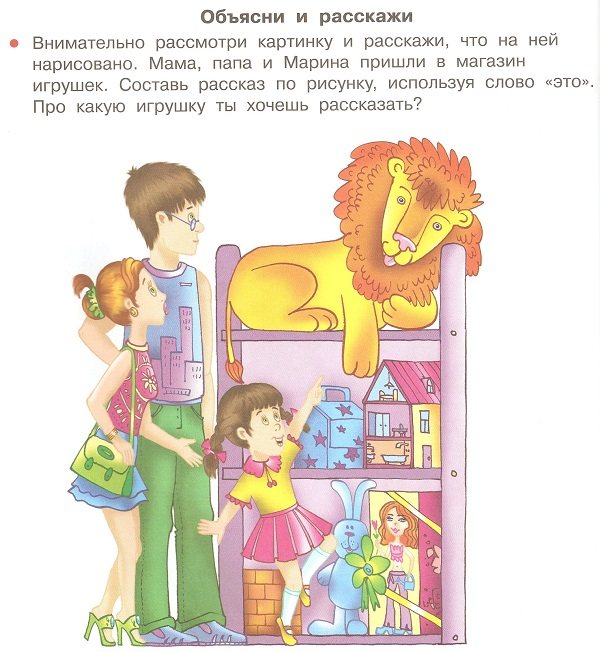
3. “An interesting continuation.” The task is useful for children 5 years old, as it teaches them to construct sentences, think logically and develop thinking. You should come up with a story on a specific topic. The adult says the first sentence, the child continues the next sentence. Then the adult comes up with a sentence again. The text should be coherent. In conclusion, we ask the child to retell.
Tasks for children 4-5 years old should be comprehensive and develop logic, thinking, speech, and fine motor skills. Thematic lessons can be adapted to the age characteristics of children, diversified with games and taught to compare, analyze, and think in a fun way. If you work with your child daily, he will enjoy learning the basics of math, reading, and other subjects.
Quiz about cartoons and characters for 4 years old with answers
The quiz is designed for guests of the fairy-tale world: both lovers of Russian folk and foreign works. Try to understand who or what they are talking about and answer the question correctly. You can even show a piece of video from a cartoon to make it easier to navigate.
- A green cartoon character who lives in a swamp. This? (Shrek)
- What was the name of the lion from Madagascar? (Alex)
- Which princess lost her shoe? (Cinderella)
- What was the name of the boy who called the genie? (Aladdin)
- How many Dalmatians were there in the famous cartoon? (101)
- What was the name of the evil lady from the Dalmatian cartoon? (Cruella Deville)
- What kind of heart was the cartoon heroine? (Brave)
- Which heroine had long hair? (Rapunzel)
- A cartoon with a funny name is... (Smeshariki)
- Who had square pants? (Spongebob)
- What was the name of SpongeBob's friend? (Patrick)
- Who is always in a hurry to help? (Chip and Dale)
- Chip and Dale's friend is... (Gadget)
- Who was Tom hunting for? (For Jerry)
- Who loved honey and pretended to be a cloud? (Winnie the Pooh)

